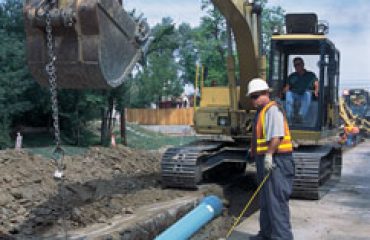Friday, May 31, 2019
Wildland, brush, and grass fires are preventable
Winnipeg, MB – The Winnipeg Fire Paramedic Service (WFPS) is reminding residents to follow important fire prevention strategies to reduce the risk of wildland, grass, and brush fires. In Winnipeg, these types of fires are typically wind-driven ground fires involving grass, brush, and dead plant matter which can spread quickly. Last year alone, WFPS fought 228 grass, brush, and wildland fires within City limits, many which damaged property and threatened structures. So far in 2019, crews have already fought 73 wildland fires.
“This year, we are seeing dry conditions which increase the risk of these types of fires significantly,” said Chief John Lane, WFPS. “Forecasted strong winds today and through the weekend also increase the risk of wildland fires, as the wind can carry embers to different locations and create additional hotspots. We are asking residents to be diligent in their activities as wildland, grass, and brush fires can spread quickly and do significant damage. These types of fires require a large amount of WFPS resources, often for long periods of time.”
The City has a set of guidelines regarding outdoor fire receptacles such as fire pits, fire places, and outdoor BBQs. The rules regarding fires within approved outdoor fire receptacles are set out in Part 6 of the City’s Neighbourhood Liveability By-law.
Residents are reminded that all open-air fires are prohibited when wind speeds exceed 25 kilometers per hour. This includes burning in approved fire pits.
WFPS and the Winnipeg Police Service encourage all residents to be safe and also active in reporting suspicious or irresponsible behaviour by phoning 911. Do not approach active fire incidents – it is dangerous to do so, and you put yourself at great risk as conditions can rapidly change.
All residents, and in particular those who live in the proximity to a forest, brush, or grass field are encouraged to take steps to protect their homes from wildland, grass, and brush fires.
“There are a number of measures property owners can take to mitigate the risk of wildfires,” said Assistant Chief Mark Reshaur, WFPS. “Proper landscaping and vegetation management are key, including thinning and pruning vegetation, removing trees and converting to fire-resistant plants, and general cleanup of brush, leaves, grass, and debris. Watering plants and vegetation in the area surrounding your home is also important, particularly in the first 10 meters around the home.”
Other strategies include storing firewood at least 10 meters away from structures, and ensuring approved outdoor fire receptacles are in an open area away from overhanging vegetation.
It is important that residents never dispose of smoking materials in any sort of vegetation or from their car window. Butts should also never be put out in planter pots.
Residents are invited to visit their closest Fire Paramedic Station to obtain a Fire Smart Homeowners Manual, created by the Province of Manitoba, which contains important information about protecting your home from wildfires. The manual can also be found online.
In recent years, the WFPS has acquired specialized equipment to combat wildfires, including compressed air-foam snuffers, pumper tankers for water supply, and quads to access otherwise difficult to reach locations rapidly.
Click here for drone video footage from yesterday’s fire in Charleswood.




